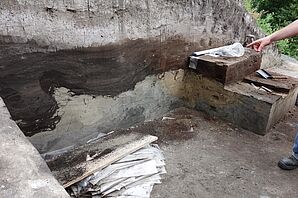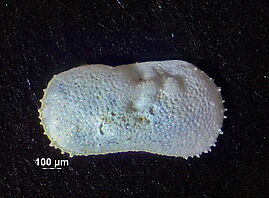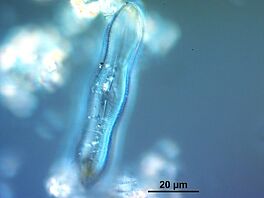


The archaeological site in the open-cast lignite mine of Schöningen is one of the most important Lower Palaeolithic localities in central Europe. Since 1981/82 long-term archaeological excavations have been conducted and a number of wooden hunting spears and thousands of larger mammal bones and bone fragments have been found. The discovery of this hunting camp in the immediate vicinity of a former lake provided first evidence for organized hunting strategies and communication skills of early humans more than 300,000 years ago. The combination of various archaeological and scientific disciplines allows drawing a comprehensive picture of the life and habitat of Homo heidelbergensis.
The analysis of fossil remains of e.g. diatoms and ostracodes preserved in lake sediment can make an important contribution. These organisms live under varying environmental conditions. The individual species are optimally adapted to specific environmental parameters (e.g. nutrient content, temperature, turbulence, salinity, water depth). If these ecological preferences are known, the microfossils can be used as indicators to reconstruct past local environmental conditions.
The aim of the study is to reconstruct the evolution of the palaeo-lake at Schöningen and climate variability in the basin during the Middle Pleistocene, based on diatom, ostracode and other microorganism species assemblage in order to contribute to a better understanding of the habitat of Homo heidelbergensis.
Link to the special exhibition "Sielmann! Entdecke die Wildnis" (CC-Virtualtours/Christo Czichy) with contribution of the Institute for Geosystems and Bioindication